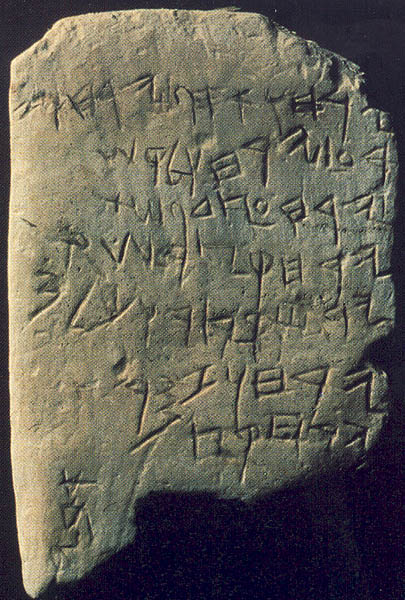Image Details

Zev Radovan
The Gezer calendar. An awkward hand, perhaps that of some schoolboy, inscribed this small limestone tablet with the annual progress of farming life. The seven slightly crooked lines read: “The (two) months of harvest. The (two) months of so/wing. The (two) months of late planting. / The month of reaping flax. / The month of reaping barley. / The month of reaping and measuring. / The (two) months of (vine-)tending. / The month of summer (-fruit).” In the lower left corner, the first three letters of the Hebrew alphabet are incised.
Dated to the tenth century B.C., this is the oldest known inscription of any significant length that can be called Hebrew. Alphabetic script, apparently invented in Canaan, made writing more accessible to the general public than syllabic cuneiform scripts or than Egyptian hieroglyphic script. The Gezer Calendar indicates that writing was in use among the Israelites of the United Monarchy, and that its use was not confined to professional scribes.
